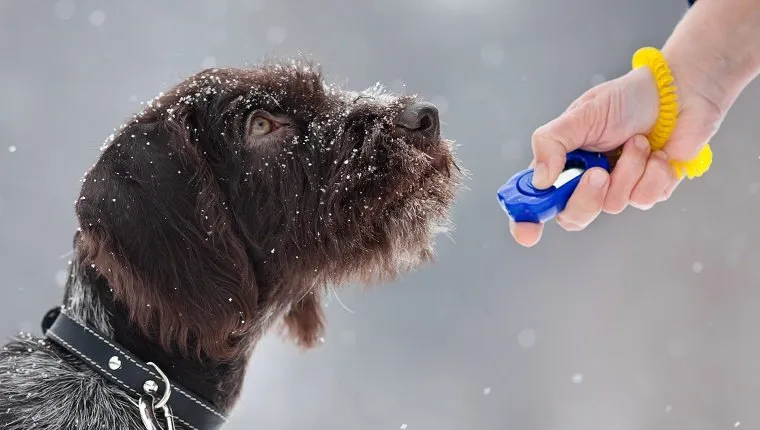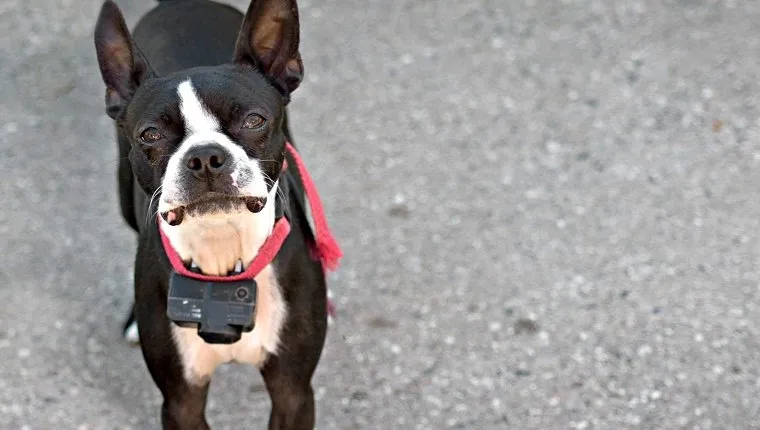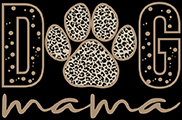There are such a lot of widespread canine coaching strategies on the market that it may be irritating to search out out which is which and what technique goes to be greatest for each your canine and also you as a pet guardian. Listed below are the canine coaching strategies used most generally in the present day and who would possibly profit most from utilizing them.
The preferred canine coaching strategies
Whereas our checklist isn’t exhaustive, the strategies beneath are probably the most extensively used and referred to methods of coaching a canine. Odds are, in the event you discover a coach they’ll be utilizing one among these.
Optimistic Reinforcement
Purely constructive reinforcement is a well-liked coaching technique really useful by animal behaviorists, veterinarians, and canine trainers alike. The speculation behind it’s pretty easy. In contrast to classical conditioning, equivalent to Pavlov’s bell experiment, this technique focuses on reinforcing voluntary good habits with rewards. However, unhealthy habits doesn’t obtain a reward or acknowledgment. If a correction is required, it comes within the type of eradicating rewards, equivalent to taking away a toy or treats. Harsh reprimands or bodily punishments usually are not essential. This coaching technique shouldn’t be solely beloved as a result of it helps construct belief between canine and their pet dad and mom, however as a result of it’s extremely efficient.
Optimistic reinforcement requires consistency. Begin with steady rewards each time your canine does the proper factor. Then, regularly transition to intermittent rewards because the habits turns into constant. Solely needed behaviors ought to obtain rewards, which might embody treats, toys, reward, and petting. This coaching technique works greatest with canine breeds who’re wanting to please and motivated by rewards like treats or reward.
Scientific Coaching
Science-based canine coaching could be troublesome to outline, because it depends on data that’s frequently constructing and altering. It goals to know canine’ nature, their means to be conditioned, and the effectiveness of rewards and punishments. Animal behaviorists are continuously creating new research and experiments to form our understanding of canine psychology.
For probably the most half, there’s a reliance on operant conditioning, which largely consists of constructive reinforcement and, much less typically, some types of punishment. Some scientific trainers consider that it’s additionally vital to discover ways to strengthen good habits with out the necessity for rewards and to depend on canine psychology to search out methods to enhance off-leash relationships between people and their pups. Scientific coaching depends on doing a great deal of analysis and staying up to date on the most recent research. For that cause, it might be greatest for skilled trainers.
Clicker Coaching

Clicker coaching can also be primarily based on operant conditioning and depends closely on the identical rules as constructive reinforcement. Generally this technique is taken into account a sub-category of constructive reinforcement somewhat than its personal technique.
This coaching technique depends on the usage of a tool to make a fast, sharp noise, equivalent to a whistle or, because the identify suggests, a clicker to sign to a canine when a needed habits is completed. The benefit of utilizing clicker coaching is that it indicators the precise second the specified habits is completed and precisely what’s being rewarded. Trainers can then use the clicker to form new behaviors and add verbal instructions.
Clicker coaching is a good technique for studying new tips, and it could actually assist form the fundamentals into extra sophisticated duties. {Many professional} trainers use this technique for educating new behaviors, though it might not essentially be well-suited for curbing undesirable behaviors. Moreover, some research recommend that the clicker capabilities extra as a secondary reinforcement, much like verbal reward, somewhat than a major one.
Digital Coaching

Digital coaching depends on the usage of an electrical collar that delivers a shock, sound, vibration, or a sprig of citronella when a canine shouldn’t be performing a desired process. There are important issues with this coaching technique, and shock collars have been banned in some European and South American nations resulting from animal welfare points. Moreover, its effectiveness is questionable, because it depends on punishment somewhat than constructive reinforcement. This implies canine be taught what to not do somewhat than what they need to do.
Whereas some proponents argue it helps right undesirable behaviors, notably aggression, aggression typically stems from concern. Utilizing a way that reinforces concern can finally create extra behavioral points somewhat than resolving them. Moreover, this could create quite a lot of stress and result in everlasting nervousness points for canine. The units are sometimes utilized by inexperienced pet dad and mom and due to this fact are overused. Because of this, this could trigger a whole lot of pointless bodily and psychological ache for canine. Nevertheless, some animal behaviorists and veterinarians agree that some digital coaching strategies, equivalent to sound cues or vibrations emitted from collars can assist curb some habits like extreme barking. For those who’re contemplating utilizing any type of digital canine coaching, do your analysis and converse to your veterinarian about security and various choices.
Mannequin-Rival Or Mirror Coaching
The model-rival technique of coaching depends on the truth that canine be taught by statement. In distinction to operant strategies, this system supplies a mannequin of fine habits or a rival to compete for sources, encouraging canine to be taught to imitate or keep away from sure behaviors. A coach may need one other human act because the mannequin, praising them for finishing duties on command or scolding them for undesirable habits. The canine, as an observer, learns what to do accurately from the mannequin. The mannequin may also act as a rival, competing to do the proper process for a desired toy or deal with it as a reward, encouraging the canine to select up on the duty and achieve it extra shortly.
Equally, mirror coaching depends on the identical precept of utilizing the canine guardian as a mannequin. To place it merely, the canine learns by instance. This coaching technique operates with an analogous stage of success as constructive reinforcement and operant conditioning. Nevertheless, some trainers could discover it extra pure and preferable.
In case your canine has a powerful bond with you and might spend a whole lot of time observing you and following you round, this can be a method that you simply discover extra snug than sticking to common coaching periods.
Alpha Canine Or Dominance

Alpha canine, or dominance coaching, relies on the concept canine view their households as packs with a strict social hierarchy. If a canine sees itself because the alpha, it should be taught to undergo its human chief. This technique entails projecting confidence, controlling sources, and asserting dominance — equivalent to making the canine wait earlier than consuming, getting into a room, or going outdoors. Canine are sometimes stored off furnishings and never engaged on the identical eye stage to strengthen human authority. This implies no getting low with the canine throughout play and no snuggles. Basically, man is dominant.
Though popularized by famend canine coach Cesar Millan, also called “The Canine Whisperer,” this method is now seen as outdated by many trendy trainers. Analysis reveals that wild wolves don’t comply with the inflexible pack construction seen in captivity. Wolves are very social and exhibit many behaviors much like people. The alpha wolf will even roll over and play with different wolves. Nevertheless, this doesn’t diminish his position because the pack chief.
To that finish, canine don’t depend on dominance-based relationships as beforehand thought. Whereas this technique could curb some behaviors, it typically fails to deal with their root causes and might create concern or nervousness.
Relationship-Primarily based Coaching

Relationship-based coaching blends a number of strategies with a customized method, emphasizing communication and a powerful bond between canine and proprietor. It requires understanding a canine’s physique language, figuring out motivating rewards, and assembly their fundamental wants earlier than coaching begins. The atmosphere is managed to optimize studying, much like how kids are taught.
Coaching begins in a distraction-free setting, regularly growing problem. For instance, a canine ought to be taught to “sit” in a quiet room earlier than making an attempt it in a busy park. When a canine doesn’t reply, the proprietor ought to assess why — distractions, discomfort, or lack of awareness — somewhat than resorting to punishment. Managing temptation can also be key; as an example, if a canine jumps on the window, limiting entry prevents the habits.
Whereas this technique fosters a deep bond, it requires endurance and time. Reasonably than being a definite approach, it integrates components of varied profitable coaching approaches.
Selecting the most effective coaching technique in your canine could be overwhelming, and even consultants disagree on the best and moral approaches. Many strategies overlap or work greatest together, as canine, like people, be taught in several methods. The golden rule is to not hurt — breaking your canine’s belief will solely make coaching more durable. Persistence is vital!








